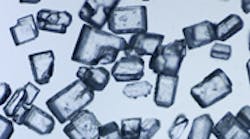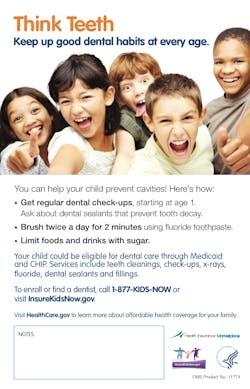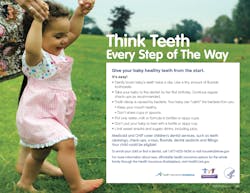The sugar industry “simply put, decided to focus on ways to reduce sugar's harms instead of answer the scientific charge that the damage to teeth was so clear and direct that the best way to reduce it was to restrict the addition of sugars to foods.”
Excessive consumption of sugar has been linked to many negative health effects (e.g., obesity, diabetes, dental decay). While dental decay in preschoolers appears to be declining and fewer young children have untreated dental decay, the problem is far from over. This article will review new information on dental decay, sugar, and some promising new therapeutics.
Findings from the National Health and Nutrition Examination Survey, 2011–2012, show the first drop in dental decay for preschoolers since 2007. (1) Also significant is that racial inequalities in tooth decay in elementary school-age children disappear by adolescence, when tooth decay affects all equally. (1). For more information on this report, Dental Caries and Sealant Prevalence in Children and Adolescents in the United States, 2011–2012, visit the website.
READ MORE | Is sugar toxic? Some of the latest news for those with a sweet tooth
The sugar and tobacco industry: Using the same playbook?
Recently the sugar industry has been accused of seeking to minimize scientific research that clearly showed sugar’s harms, while influencing studies that painted sugar consumption is a less negative light—much as the tobacco industry has done historically. (2) The authors of the PLOS Medicine report detailing these accusations examined industry archives dating to the 1960s, when the industry “simply put, decided to focus on ways to reduce sugar's harms instead of answer the scientific charge that the damage to teeth was so clear and direct that the best way to reduce it was to restrict the addition of sugars to foods” (2).
The Sugar Association represents a number of companies (e.g., Imperial Sugar, C&H Sugar, Domino Sugar). The National Caries Program (NCP), launched in 1971, apparently overlooked an opportunity to improve a science-based understanding of how to control sugar ingestion to prevent tooth decay. This illustrates how industry shields itself from possibly damaging research, and also seeks to produce research that supports consumption of its products. (3)
The sugar industry opposes a number of current policy proposals, including the Dietary Guidelines Advisory Committee Report, and the World Health Organization guideline on sugars proposed in 2014. The Sugar Association responses state that the recommendations are “not based on the preponderance of science” and “backed by only ‘moderate,” ‘low,’ and ‘very low’ evidence,” respectively.
The authors of the PLOSMedicine study conclude: "Actions taken by the sugar industry to impact the NIDR's NCP research priorities, which echo those of the tobacco industry, should be a warning to the public health community." (3)
READ MORE | WHO calls on countries to reduce sugars intake among adults and children
Sugar substitutes: Not so fast
While excessive sugar consumption is not recommended, neither is the use of sugar substitutes. A new study of 749 people ages 65 and older established that those who drank diet soda gained practically three times the abdominal fat over nine years as those who didn’t drink diet soda. (6) The authors concluded, “In a striking dose-response relationship, increasing DSI was associated with escalating abdominal obesity, a potential pathway for cardiometabolic risk in this aging population”. (6) The researchers adjusted for confounding factors such as diabetes, tobacco use (e.g., smoking), and levels of physical activity.
Scientists are perplexed about why this occurs, but speculate that synthetic sweeteners may confuse our bodies and weaken the link in our brains between sweetness and calories, which may initiate weight gain and cravings for sweeter foods. The authors also state that recent study in mice indicated that artificial sweeteners can change bacteria in the gut which caused them to be susceptible to insulin resistance and glucose intolerance, which may contribute to weight gain. Artificial sweeteners have also been associated with a drop in leptin, a hormone that inhibits hunger. (6)
Fighting dental decay: New materials and resources
Also, researchers have found a material, graphene oxide, which is effective at eliminating decay-causing bacteria. (7) Scientists are looking at ways to eliminate bacteria without causing antibiotic resistance, a grave problem growing worldwide. The researchers tested the graphene oxide against three species of bacteria known to cause tooth decay and periodontal disease. The material slowed the growth of the bacteria by damaging the cell walls and membranes, showing that the material may be useful in the treatment of oral disease. (7)
For great patient education materials, check out newly redesigned Centers for Medicare & Medicaid Services (CMS) Think Teeth website. You can order free posters, flyers, and tear sheets in both English and Spanish. They include oral health guidelines for, pregnant women, parents or caregivers of children ages 0–3, and parents or caregivers of children of all ages. You are able to customize the materials with your organization’s information for printing.
And last, but not least, a new lollipop! Zollipops use a natural sweetener called xylitol to restore the mouth's pH to a neutral level. Zollipops, which sell for $6 for a bag of 15, are available on Amazon.com.
References
1. Dye BA, Thornton-Evans G, Li X, Iafolla TJ. Dental caries and sealant prevalence in children and adolescents in the United States, 2011–2012. NCHS data brief, no 191. Hyattsville, MD: National Center for Health Statistics. 2015.
2. MacGill M. Tooth decay: Sugar industry ‘behaved like tobacco manufacturers.’ Medical News Today.http://www.medicalnewstoday.com/articles/290643.php. Published March 11, 2015.
3. Kearns CE, Glantz SA, Schmidt LA. Sugar industry influence on the scientific agenda of the National Institute of Dental Research’s 1971 national caries program: A historical analysis of internal documents. PLoS Med. 2015;12: e1001798. doi: 10.1371/journal.pmed.1001798.
4. The Sugar Association. The Sugar Association responds to 2015 Dietary Guidelines Advisory Committee Report. The Sugar Association website. http://www.sugar.org/sugar-association-responds-2015-dietary-guidelines-advisory-committee-report/. Published February 19, 2015. Accessed March 31, 2015.
5. The Sugar Association. Sugar Association statement on WHO Guideline on sugars: It’s misleading for ‘strong’ guidelines to be backed by only ‘moderate,’ ‘low’ and ‘very low’ evidence. The Sugar Association website. http://www.sugar.org/sugar-association-statement-guideline-sugars-misleading-strong-guidelines-backed-moderate-low-low-evidence/. Published March 4, 2015. Accessed March 31, 2015.
6. Fowler SP, Williams K, and Hazuda HP. Diet soda intake is associated with long-term increases in waist circumference in a biethnic cohort of older adults: The San Antonio longitudinal study of aging [published ahead of print March 17 2015]. J Am Geriatr Soc. 2015. doi: 10.1111/jgs.13376.
7. He J, Zhu X, Qi Z, et al. Killing dental pathogens using antibacterial graphene oxide [Published ahead of print March 2 2015]. ACS Appl Mater Interfaces. 2015:7:5605-11. doi: 10.1021/acsami.5b01069.









